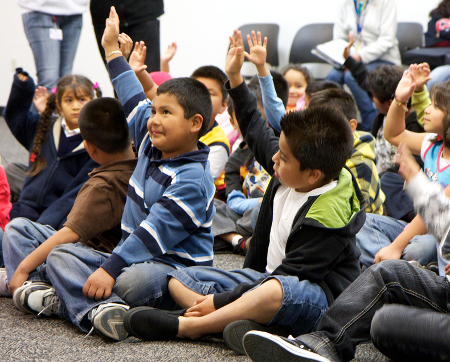Alarm Over Science Squeeze in California

California officials and business leaders want to correct what they say is a failure to invest enough time, money and training to teach science well, the Los Angeles Times reports.
The reaction came in response to a new survey of science education in California elementary schools that found only 10% of elementary students regularly receive hands-on science lessons, and that 40 percent of elementary teachers spend an hour or less a week of science instruction. The recommended time is 90 minutes to 2 hours a week.
The survey, conducted by the Center for the Future of Teaching and Learning at WestEd, the Lawrence Hall of Science at UC Berkeley, SRI International and others, also found that 44 percent of principals didn’t think students in their own school would receive high-quality science instruction.
Just one-third of elementary teachers said they feel prepared to teach science, and 85% said they have not received any training during the last three years. Nearly two thirds of the school districts have no staff dedicated to elementary science.
The squeeze on science instruction is reflected in predominantly low science test scores. On the most recent fourth-grade science exams compiled by the National Assessment of Educational Progress, California students ranked at the bottom level along with Arizona, Mississippi, and Hawaii.
A new statewide network of educators, scientists, philanthropists and business leaders hopes to reverse this trend. The California STEM Learning Network brought science instruction to 300 after-school programs this fall and plans to more than triple that number next year.
“There is a sense of alarm, particularly in the business community, over our low achievement scores in math and science,” said Christopher Roe, head of the STEM network. “For a state that depends on science and technology as we do with Silicon Valley and Hollywood, we can’t afford to be on the bottom. We have a history in years past as a leader, and we have to get there again.”
Filed under: K-12 Education News
Tags: Elementary Education, Research, Research on Learning, Science Education








